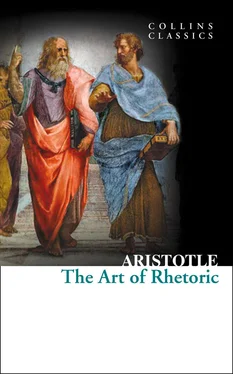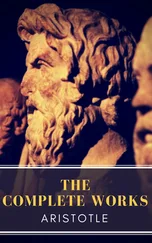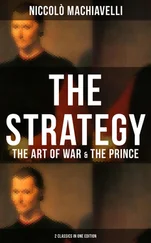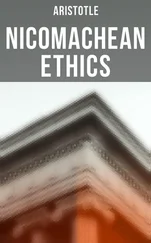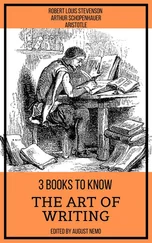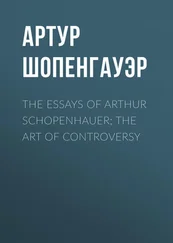The first English translation of The Art of Rhetoric came at the turn of the 20th century. Until then, only classical scholars were able to read Aristotle’s words and interpret his thoughts and meaning. Greek and Latin vocabularies are far smaller than English, so interpretation is a significant factor. By definition, English translations of his work are interpretations, too, so this should be borne in mind when reading the work.
Impact on Contemporary Society
One very significant theme is Aristotle’s text is that of judice , or judgement, in the context of law. As such, The Art of Rhetoric is a seminal work in judicial matters. It establishes the basic point that doing right and doing wrong need to be defined and distinguished by rhetoric in order that a fair judgement can be made. In essence, this is the seed of the established protocol of prosecution and defence in the modern court of law, which relies heavily on the rhetorical skills of the parties involved in swaying the jury one way or the other.
In fact, this basic principle forms the backbone of any debate, as it is all about weighing one view against another. In areas where empirical proof is not available, rhetoric plays a vital role in generating partiality or bias in an audience. This is certainly true in matters of a moral or ethical nature, since ethics and morals are human constructs. For example, it is necessary for society to maintain the rule that killing another person is wrong, yet there is no natural law that informs humanity of this. So, having accepted the idea that killing needs to be wrong, it then becomes a matter of judgement as to how wrong it is in different contexts. This is where rhetoric is important, as it has the effect of bringing differing views to the table where there are no absolutes. The degree of wrongdoing may range from accidental killing to self-defence to manslaughter to murder. As the very concept of wrongdoing is a moral construct, the outcome resulting from such rhetoric has consequences for the aim of avoiding further wrongdoing.
In Aristotle’s day, what we now deem science was treated in a similar way to law, as there was no established foundation of scientific practice in the form of empirical observations and experiments. As early scientific ideas were largely reliant on untested hypotheses, it was therefore a matter for the natural philosopher to apply rhetoric against the views of others. It clearly worked, as many quasi-scientific ideas, accepted in antiquity, became received wisdom for over two millennia, until eventually proven incorrect by true science. An example of this is the idea of cardinal humours, or fluids, of the body – blood, phlegm, choler and melancholy. In a world lacking in any true knowledge of the workings of the human body, the idea of cardinal humours was easily promoted by the use of rhetoric, not least because it was better than anyone else could suggest for many centuries to come. In fact, the writings of the Greeks and Romans were generally treated as unquestionable truths for a long time, including, ironically, The Art of Rhetoric .
Those who practised Aristotelian philosophy became known as the Peripatetics. The Greek prefix ‘ peripat -’ loosely translates as ‘all around’ and is used in the words that describe colonnades, as were found aplenty in the Lyceum, and contemplatively wandering, as Aristotle was reputed to have done when lost in deep thought. Thus, the term ‘Peripatetic’ evolved with a double stem.
The Art of Rhetoric has been attacked by modern scholars in much the same way that classical scientific ideas have been contested. Today, people don’t take Aristotle’s ideas as the truth. Instead, they regard his ideas as part of the beginning of modern civilization, whether they are agreed with or not. The important point is that the ancient Greeks got the ball rolling, in order that subsequent scholars were able to evolve the disciplines of thought that now form the foundations of our society and culture. Above all, Aristotle’s writings are about effective communication of ideas through language, which is the linchpin of civilization. In order for ideas to become accepted parts of the collective framework of thought, they need to become memes, so that they survive by being passed from one generation to the next.
About the Author
As for Aristotle himself – we know a surprising amount about him, considering he lived such a long time ago. This is because he made quite a name for himself as an intellectual, polymath and pedagogue – he was also rather good at rhetoric!
His parenthetic years are 384 BC and 322 BC, so he lived into his sixties, which was a very good age for that era. Aristotle was the student of another famous Greek philosopher, Plato, who was in turn the student of Socrates. Aristotle established hypotheses and theories that remained largely unchallenged until the Renaissance (Re-birth), when the principals of scientific research and experimentation allowed people to break free from established beliefs by providing empirical evidence and proof. This means that European culture was based on Aristotelian philosophy for about 2,000 years, until people were ‘enlightened’ by scientific truths.
One of the reasons that Aristotle posthumously enjoyed such influence is that he had significant sway during his own lifetime. For example, he was the mentor of Alexander the Great, who went on to conquer nations and build the largest empire the world had yet seen. Such was Aristotle’s impact on ancient civilization that his thinking simply was not bettered at that time. His successor is the lesser-known Theophrastus, who came up with a number of additional ideas on the workings of the world, but was destined to be remembered in the shadow of his three predecessors, Socrates, Plato and Aristotle. Following Theophrastus, the well of original thought dried up in the Athenian Lyceum, leaving the world in philosophical stasis for some time to come.
1
Rhetoric the counterpart of Dialectic. Both alike are concerned with such things as come, more or less, within the general ken of all men and belong to no definite science. Accordingly all men make use, more or less, of both; for to a certain extent all men attempt to discuss statements and to maintain them, to defend themselves and to attack others. Ordinary people do this either at random or through practice and from acquired habit. Both ways being possible, the subject can plainly be handled systematically, for it is possible to inquire the reason why some speakers succeed through practice and others spontaneously; and every one will at once agree that such an inquiry is the function of an art.
Now, the framers of the current treatises on rhetoric have constructed but a small portion of that art. The modes of persuasion are the only true constituents of the art: everything else is merely accessory. These writers, however, say nothing about enthymemes, which are the substance of rhetorical persuasion, but deal mainly with non-essentials. The arousing of prejudice, pity, anger, and similar emotions has nothing to do with the essential facts, but is merely a personal appeal to the man who is judging the case. Consequently if the rules for trials which are now laid down some states especially in well-governed states – were applied everywhere, such people would have nothing to say. All men, no doubt, think that the laws should prescribe such rules, but some, as in the court of Areopagus, give practical effect to their thoughts and forbid talk about non-essentials. This is sound law and custom. It is not right to pervert the judge by moving him to anger or envy or pity – one might as well warp a carpenter’s rule before using it. Again, a litigant has clearly nothing to do but to show that the alleged fact is so or is not so, that it has or has not happened. As to whether a thing is important or unimportant, just or unjust, the judge must surely refuse to take his instructions from the litigants: he must decide for himself all such points as the law-giver has not already defined for him.
Читать дальше
